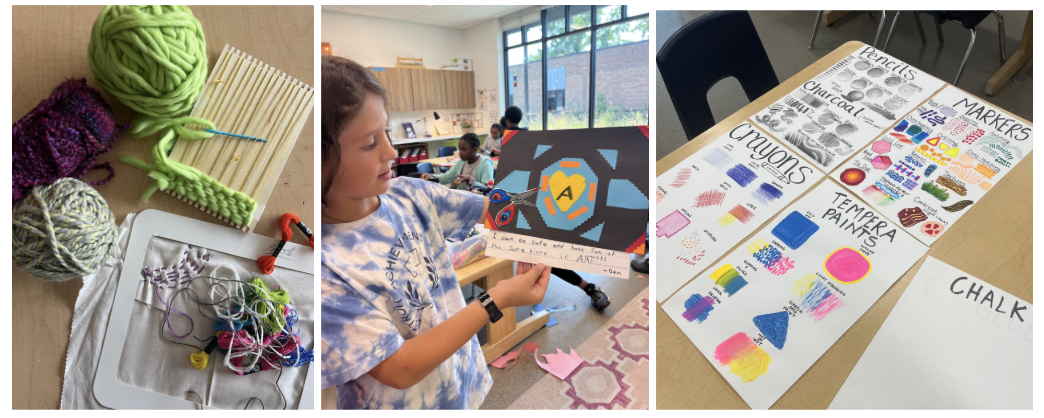Skills & Techniques for HQW
Here at DAA we value the process it takes to achieve high quality final products. There are many skills and techniques that our young artists can practice to create high-quality artwork. Here are a few ideas that we use in the art room to help inspire you and your young artists to make beautiful and well crafted works of art whether at school or at home!
1. Observational drawing
This is a fundamental skill for any artist, and it involves learning to really see what you're looking at and translate that onto paper. Kids can practice observational drawing by still life objects, people, or even nature. Encourage them to pay attention to details like proportions, shading, and texture.
2. Color mixing
Learning how to mix colors is another essential skill for creating vibrant and interesting artwork. Start with basic color theory, such as primary and secondary colors, and then experiment with mixing different colors together to see what happens.
3. Experiment with different mediums
There are so many different art supplies available, so encourage kids to try out different things like paints, pencils, crayons, clay, and collage materials. Each medium has its own unique properties and can be used to create different effects.
4. Learn about composition
Composition is the arrangement of elements in a work of art, and it's important for creating a visually pleasing piece. There are many different compositional techniques that kids can learn, such as the rule of thirds, leading lines, and balance.
5. Practice regularly
Just like any other skill, creating high-quality artwork takes practice. Encourage kids to make art regularly, even if it's just for a little bit each day. The more they practice, the better they'll become.
Here are some additional tips for helping kids create high-quality artwork:
Provide them with good quality art supplies. Having good tools to work with will make a big difference in the final product. Good quality art supplies do not have to be expensive either… check out local resources like Arts & Scraps!
Create a dedicated art space at home. This will give young artists a place to focus on their creativity and make a mess without worry.
Be positive and encouraging. Let kids know that you're proud of them, no matter what their artwork looks like. We learn through making mistakes.
Don't be afraid to get messy! Art is supposed to be fun, so let kids experiment and explore without worrying about making mistakes.
With a little encouragement and practice, kids can create amazing artwork that you'll be proud to display. Do not hesitate to reach out to me if you are looking for creative resources to support your young artist outside of the art room.





